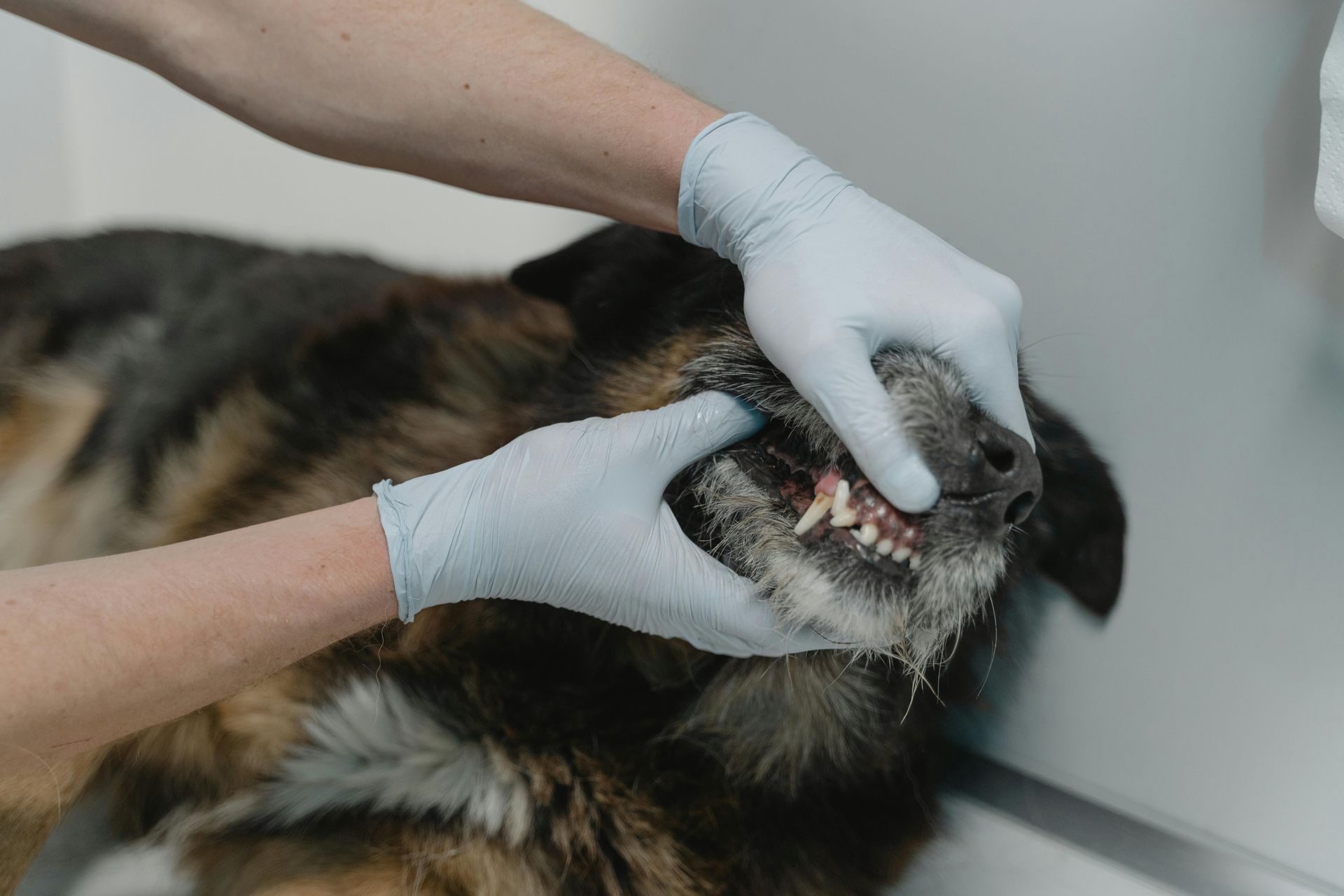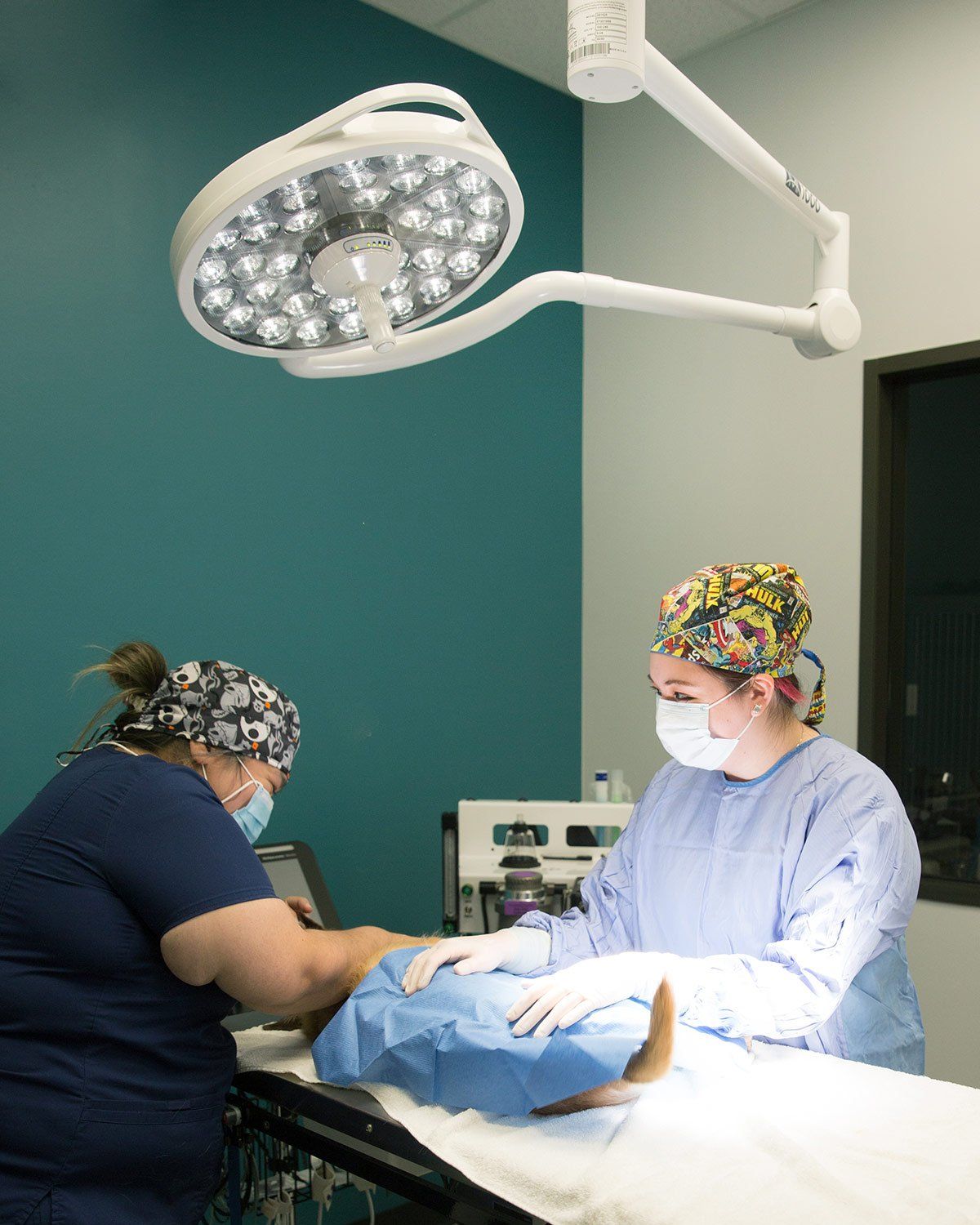Osteoarthritis in Dogs & Cats
Osteoarthritis in Dogs and Cats
It is estimated that about 14 million adult dogs in the United States are affected by osteoarthritis and about 90% of cats over 12 years of age have x-ray evidence of arthritis, making it a significant issue affecting pets.
Signs and Symptoms
Dogs and cats differ drastically in how they show pain. Cats are subtler in their signs of pain as they are prey animals and will not show pain until it is severe.
Signs of Osteoarthritis in Dogs
- Lameness or limping
- Decreased activity
- Inability to jump
- Stiffness
- Difficulty with stairs
- Changes in behavior (less sociable)
Signs of Osteoarthritis in Cats
- Hesitancy to jump
- Urination/defecation outside the litterbox
- Poor grooming
- Increased sleeping
- Stiffness when rising
- Changes in behavior (increased irritability)
The checklists and videos listed will help you to determine if your dog or cat is showing signs of arthritis and needs to be evaluated by a veterinarian.
Diagnosis
We will assess the joints during the exam and look for any crepitus (joint cracking), effusion (inflammation/swelling), asymmetry in the limbs, pain, or muscle atrophy (reduced muscle mass). Typically, x-rays will be recommended to further evaluate the joints, the tissue surrounding the joints, and the bones themselves. Comprehensive bloodwork may also be recommended to assess your pet’s overall health and address any underlying issues that could contribute to their arthritis or prohibit them from taking certain pain medications.
Treatment Options
We customize the treatment approach based off of your personal pets’ needs. We like to use a multimodal approach by combining several different treatment options as each option works in different ways to help alleviate pain. In this way, your pet gets the maximum benefit of pain relief available.
- Pain medications:
o Non-steroidal anti-inflammatories (NSAIDs) – These medications are specific to dogs and cats and are similar to Ibuprofen and Tylenol in humans that help to decrease pain and inflammation. Examples include Vetprofen, Metacam, and Onsior.
o Gabapentin, which helps with nerve pain
o Methocarbamol, which is a muscle relaxant
- Monoclonal antibody injections: These are once monthly injections that target nerve growth factor to relieve pain associated with osteoarthritis. Great for animals that don’t like to take medications! Librela is the dog version and Solensia is the cat version.
- Adequan (polysulfated glycosaminoglycan): For dogs only. Given twice weekly for up to 4 weeks, this injection helps slow the progression of cartilage deterioration in the dog’s synovial joints and begins helping to restore joint tissues that are damaged or inflamed.
- Joint supplements: Many joint supplements are available on the market, including ones with glucosamine, chondroitin sulfate, egg shell membrane, omega-3 fatty acids, and undenatured type-II collagen (UCII). Each works differently to the support the joint.
o Chondroitin sulfate helps reduce inflammation in the joints.
o Glucosamine promotes the production of new cartilage.
o Omega-3 fatty acids can help reduce inflammation and improve mobility in dogs and cats
o Egg shell membrane supports healthy bones and joint flexibility.
o Undenatured type-II collagen (UCII) helps maintain the normal metabolism of joints and supports normal joint function by targeting the immune system.
- Laser therapy: Photobiomodulation (PBM) therapy occurs when a dose of light energy reaches target tissue and results in decreased inflammation, decreased pain, and accelerated healing.
- Weight management and diet: Keeping a pet at an ideal weight helps to keep pressure off of joints. If your dog or cat is overweight, we can discuss tips on how to reduce their weight as well as how much you should be feeding them for them to reach their ideal weight. Prescription diets are also available that are specially formulated to help pets lose weight and keep the lost weight off naturally by activating their unique metabolism while also stimulating their natural ability to burn fat and keep them playful & active. These diets also help keep pets feeling full and reduce food hunger between meals. Examples include Hill’s Metabolic, Purina OM, and Royal Canin Satiety. There are also combination diets available for both weight loss and joint support.
- Orthotics: A variety of orthopedic braces for both dogs and cats are available to help support different joints, making walking, running, and overall movement, more comfortable for your pet.
Contact us today to schedule an orthopedic evaluation for your pet and discuss options to help them live pain free!








